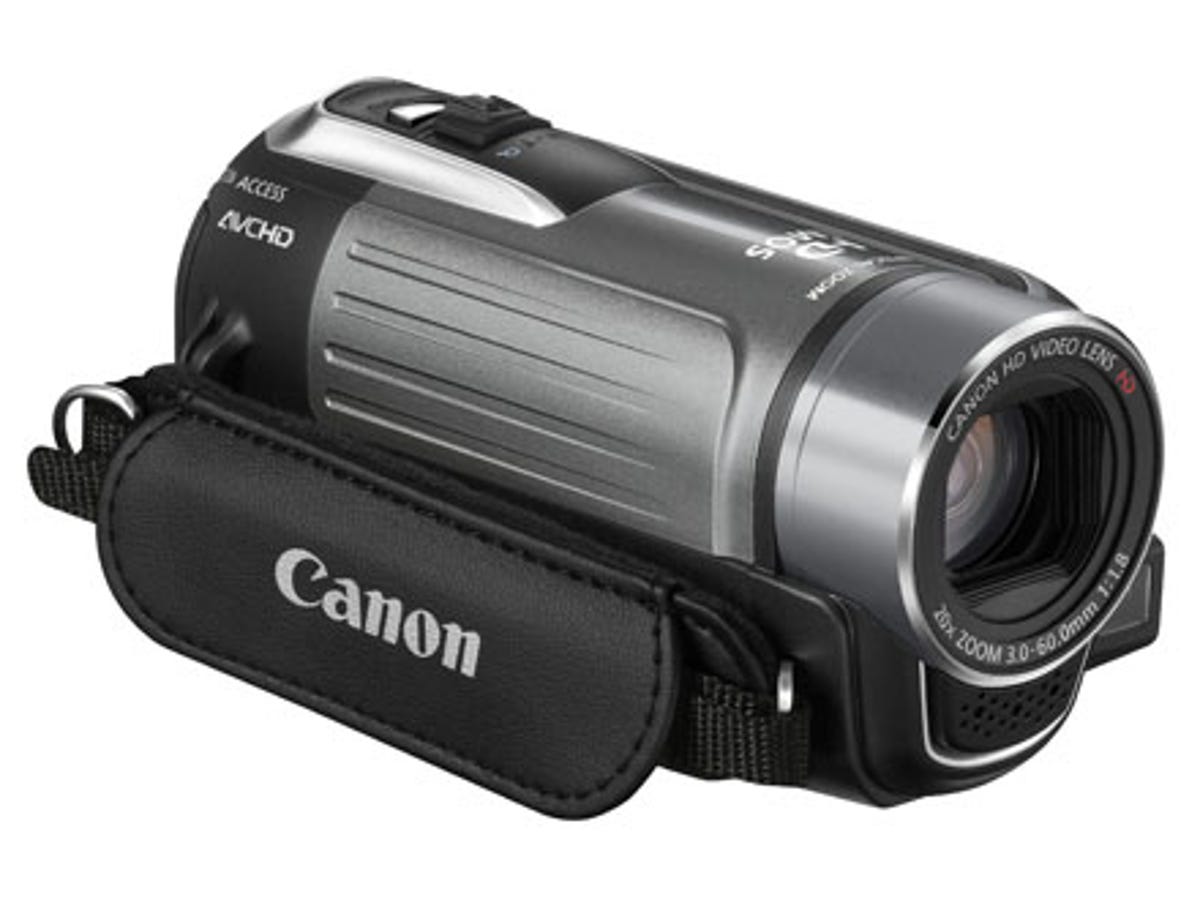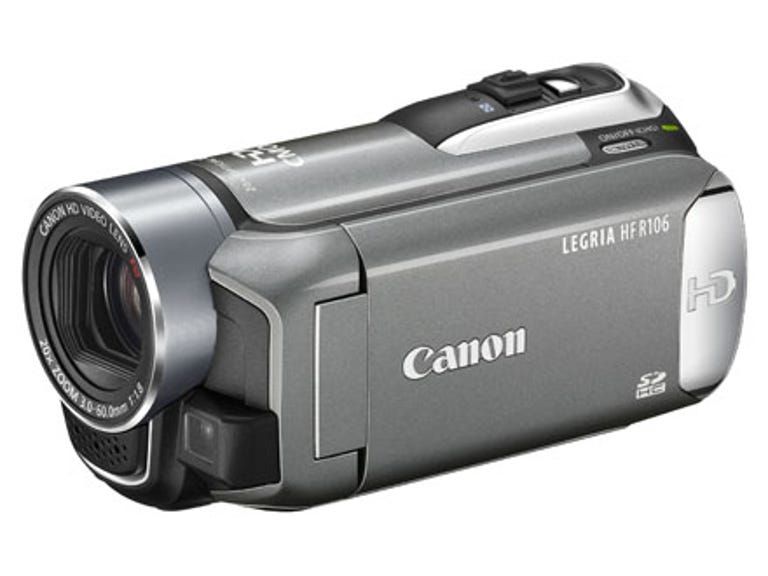 Why You Can Trust CNET
Why You Can Trust CNET Canon Legria HF R106 review: Canon Legria HF R106
Cheap and mostly cheerful, the Canon Legria HF R106 is by no means perfect, but it's certainly one of the best camcorder options available in the sub-£250 price bracket.
In the magic HD kingdom, prices have come crashing down. It's now possible to pick up some incredibly cheap pocket video cameras offering full 1080p high-definition recording for as little as £120. But while these are often small and simple to use, they don't always compare well against traditional camcorders in terms of features and picture quality.
The Good
The Bad
The Bottom Line
At £250, the Canon Legria HF R106 is probably among the cheapest non-pocket HD camcorders currently available, but there are already a number of contenders in the 'best of budget' category, so how does it square up?
The bare facts
We're all making cutbacks these days and there's no shame in the fact that the Canon Legria HF R106 has been stripped right back to the bare basics. As it happens, Canon's smart metallic-grey design does a pretty good job of disguising the camcorder's budget origins. It's hardly a tiddler by modern standards, but it's still pretty compact and well built, with a comfortable grip and sensibly placed buttons. Its 2.7-inch fold-out LCD screen is a good size and, as with several other recent Canons we've seen, the battery compartment encloses the power pack within the unit itself, rather than leaving it to stick out at the rear.

In many ways, the HF R106 can be defined by what features it is missing rather than those it offers. There's no touch-sensitive control system, for example, and no optical image stabiliser (an electronic image stabiliser is supplied instead). Manual controls are thin on the ground and there's no internal memory or hard disk -- you'll need to supply your own SD/SDHC card before you can actually start filming. Depending on your level of expectation, however, these omissions may come as no surprise given the product's price. Also, depending on how you intend to use the device, you may not miss them much anyway.
Picture imperfect
Perhaps the most obvious instance of cutbacks taking their toll is in the HF R106's picture quality. Canon tries to squeeze as much as it can from a smaller than average (1/5.5 type) CMOS image sensor and does a fairly good job most of the time. The top-quality setting saves recordings at 1080i resolution at 50 frames per second (fps) and a bit rate of 17Mbps. There's even a 25fps progressive mode available to lend your recordings a film-type look.
That might sound good in theory but, compared to other, more expensive AVCHD camcorders, picture quality is frequently compromised by a consortium of blemishes, including areas of electronic noise in solid colours, as well as some over-saturation around the fringes of brightly coloured subjects. Low-light sensitivity is another weakness -- the HF R106 gets very grainy very quickly if it can't find enough ambient illumination.
Compare its recordings alongside those of a similarly priced pocket video camera, though, and the Canon device has the upper hand. Motion is smooth, detail is much sharper and there's far less rolling shutter wobble in the image than you'll find from the average £250 pocket cam. If size is not an issue and you're looking for the best HD picture you can get for the lowest price, the Legria is definitely the superior choice.
Photo quality, on the other hand, is quite weak. Top resolution for stills is the same as video -- 1080i, which doesn't add up to much detail in this age of multi-megapixel photography. In all likelihood you could probably get better snaps from your smart phone.
Canon's budget camcorder is surprisingly well catered for in other areas, though. A generous (20x) optical zoom is provided, where some models might only stretch to a poor-quality digital equivalent. HDMI, component and composite video outputs are all available and a number of useful automated features, such as face tracking, help make it easy to shoot decent clips. 'Smart auto' mode makes things even easier by offering the closest thing to one-touch filming. Switch this on and the camera does a very good job of managing almost everything bar starting and stopping.
Conclusion
Of all Canon's entry-level R-series camcorders, the Legria HF R106 is definitely the one to go for. Its picture quality isn't perfect, but this is reflected in its low price, which, unlike the Legria HF R18, isn't inflated by the inclusion of costly internal storage.
If you're willing to pay a little more, either of our current favourite budget cams -- Sony's HDR-CX115E and Panasonic's HDC-SD60 -- would be worth considering, since both represent a significant step up in quality for relatively little extra outlay. But if you're tied to a strict budget and not tempted to go the pocket-cam route, the Legria HF R106 could well be at the top of your list.
Edited by Emma Bayly


